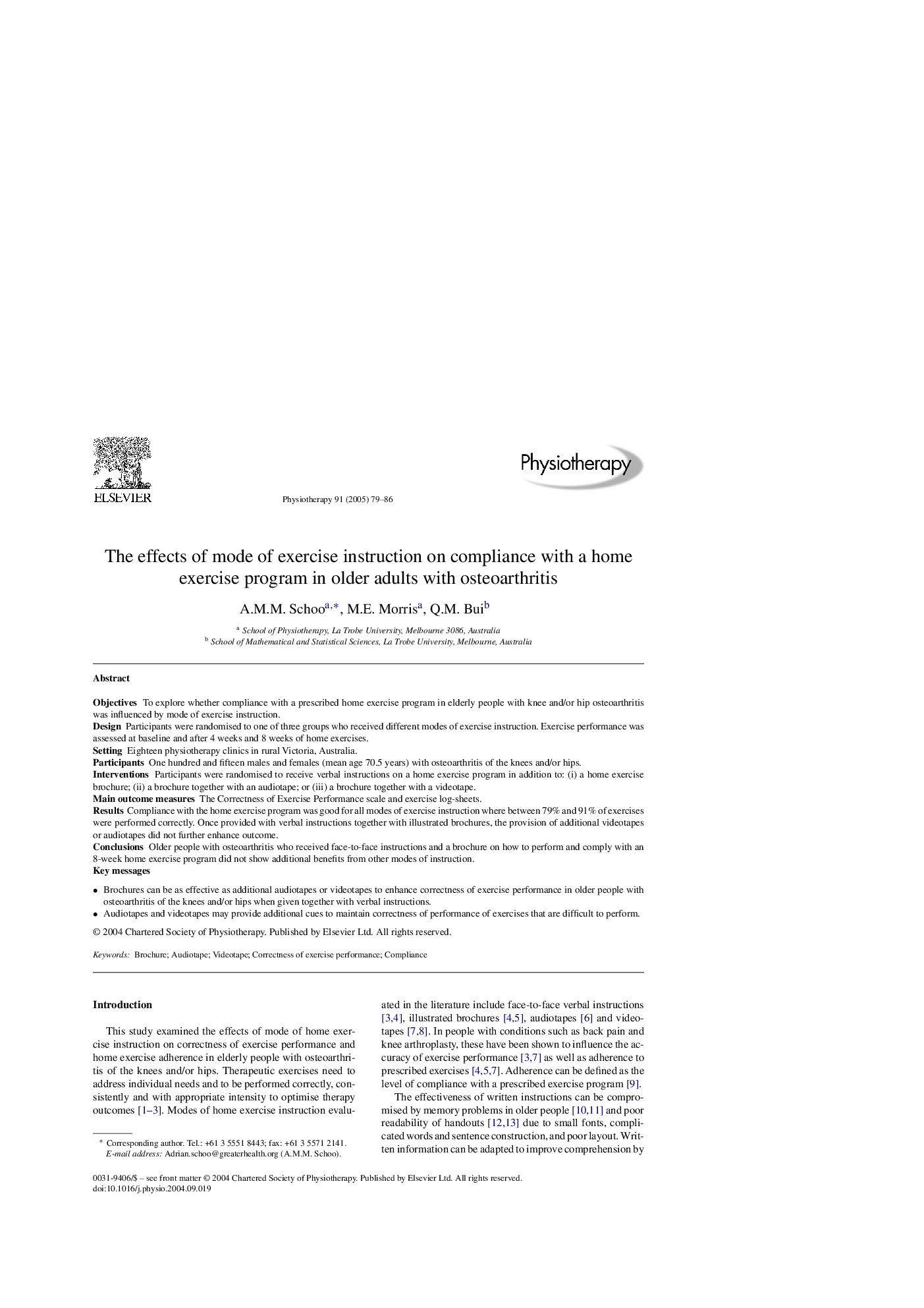| Article ID | Journal | Published Year | Pages | File Type |
|---|---|---|---|---|
| 9048584 | Physiotherapy | 2005 | 8 Pages |
Abstract
ObjectivesTo explore whether compliance with a prescribed home exercise program in elderly people with knee and/or hip osteoarthritis was influenced by mode of exercise instruction.DesignParticipants were randomised to one of three groups who received different modes of exercise instruction. Exercise performance was assessed at baseline and after 4 weeks and 8 weeks of home exercises.SettingEighteen physiotherapy clinics in rural Victoria, Australia.ParticipantsOne hundred and fifteen males and females (mean age 70.5 years) with osteoarthritis of the knees and/or hips.InterventionsParticipants were randomised to receive verbal instructions on a home exercise program in addition to: (i) a home exercise brochure; (ii) a brochure together with an audiotape; or (iii) a brochure together with a videotape.Main outcome measuresThe Correctness of Exercise Performance scale and exercise log-sheets.ResultsCompliance with the home exercise program was good for all modes of exercise instruction where between 79% and 91% of exercises were performed correctly. Once provided with verbal instructions together with illustrated brochures, the provision of additional videotapes or audiotapes did not further enhance outcome.ConclusionsOlder people with osteoarthritis who received face-to-face instructions and a brochure on how to perform and comply with an 8-week home exercise program did not show additional benefits from other modes of instruction.Key messages
- Brochures can be as effective as additional audiotapes or videotapes to enhance correctness of exercise performance in older people with osteoarthritis of the knees and/or hips when given together with verbal instructions.
- Audiotapes and videotapes may provide additional cues to maintain correctness of performance of exercises that are difficult to perform.
- Brochures can be as effective as additional audiotapes or videotapes to enhance correctness of exercise performance in older people with osteoarthritis of the knees and/or hips when given together with verbal instructions.
- Audiotapes and videotapes may provide additional cues to maintain correctness of performance of exercises that are difficult to perform.
Keywords
Related Topics
Health Sciences
Medicine and Dentistry
Complementary and Alternative Medicine
Authors
A.M.M. Schoo, M.E. Morris, Q.M. Bui,
